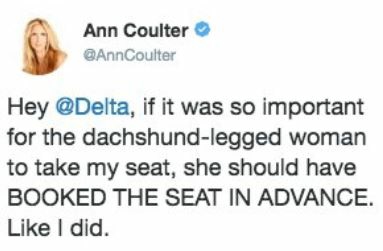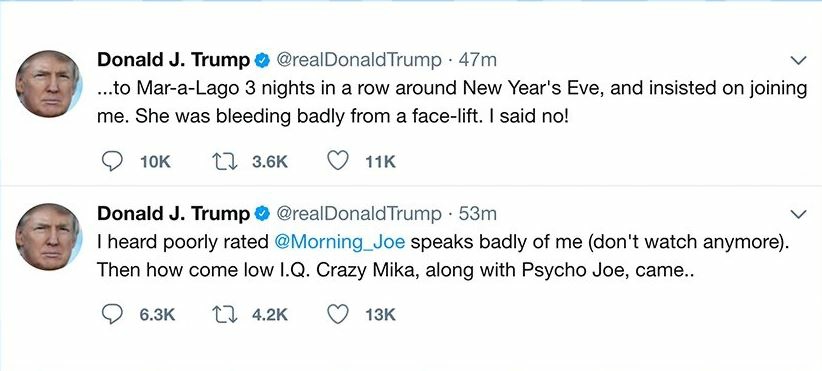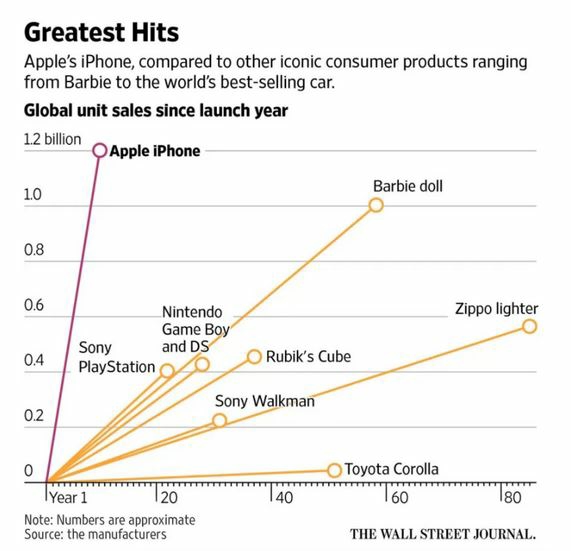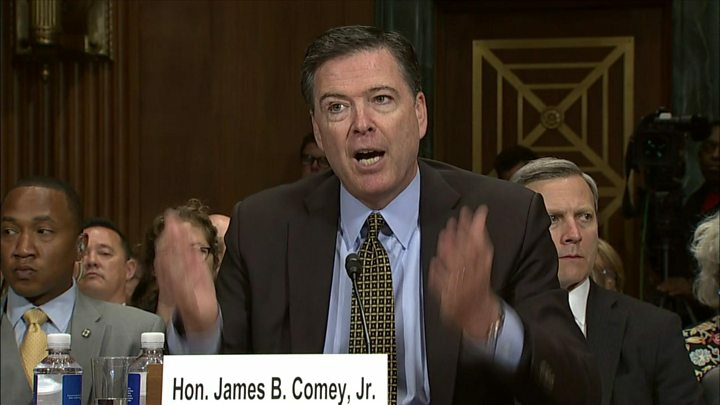Walmart Apologizes for Racist Description
 Walmart blamed a seller for a racist description of a hair weaving net. The blurb included the "N-word" as an adjective with "brown" for the product color.
Walmart blamed a seller for a racist description of a hair weaving net. The blurb included the "N-word" as an adjective with "brown" for the product color.
Walmart removed the description and issued an apology, shown here.
 The seller, Jagazi in the United Kingdom, said someone was using its name to sell products on Walmart's website. Jagazi wrote a statement denying connection with the product but didn't mention the racial slur.
The seller, Jagazi in the United Kingdom, said someone was using its name to sell products on Walmart's website. Jagazi wrote a statement denying connection with the product but didn't mention the racial slur.
We woke up this morning to the news that someone has used our name, Jagazi, to list an item. Please beware that we are reporting this to as many people as we can and trying to get all the listings pulled down. The real Jagazi is a 100% black company for black people. People have often used our brand name to try and sell their products. Please be aware. Very sorry for all the distress this has caused. We are feeling the pain here as well. Most shocking!
An AOL article author criticizes Jagazi for "indicating some offense to the racial slur and much offense to someone selling fake Jagazi on Walmart's website." Do you agree or disagree?
Discussion:
- How does a mistake like this happen?
- How well did Walmart handle the apology? Should the company take more responsibility? Why or why not?
- Assess Jagazi's response. What, if anything, should Jagazi have done differently?
- The AOL article has a punctuation error. Can you find it?
Did Ann Coulter Go Too Far?
 Have we had enough of customer complaints about airlines? The social media tenor seems to be trending in that direction, at least in the case of Ann Coulter and Delta Airlines.
Have we had enough of customer complaints about airlines? The social media tenor seems to be trending in that direction, at least in the case of Ann Coulter and Delta Airlines.
Author and media personality Ann Coulter paid $30 for a seat with more legroom but was "inadvertently" moved as the airline shuffled seats to accommodate other passengers. Coulter tweeted several attacks on the airline, including a couple about other passengers: the one at right and, in another tweet, "Immigrants take American jobs (& seats on @Delta)." 
Delta promised to refund Coulter's $30 and pushed back on her insults. In tweets and in a statement, the company admitted confusion:
We are sorry that the customer did not receive the seat she reserved and paid for. More importantly, we are disappointed that the customer has chosen to publicly attack our employees and other customers by posting derogatory and slanderous comments and photos in social media. Her actions are unnecessary and unacceptable.
Each of our employees is charged with treating each other as well as our customers with dignity and respect. And we hold each other accountable when that does not happen.
Delta expects mutual civility throughout the entire travel experience.
We will refund Ms. Coulter's $30 for the preferred seat on the exit row that she purchased.
Brandwatch assessed sentiment on social media and found more negative responses to Coulter than to Delta.
Discussion:
- Do you find yourself sympathizing more with the airline or with Coulter? Why?
- How does the timing (moving her seat within 24 hours of the flight) affect your response, if at all?
- Where did Coulter perhaps cross a line? Read more tweets here.
- How well did Delta handle the situation? What, if anything, should the airline have done differently on social media or in the statement?
What Happens When a 15-Year-Old Manages the Twitter Account?
 For Southern Rail in the U.K., an intern taking over the Twitter feed was a welcome reprieve from angry customer tweets. Eddie, the 15-year-old intern put out a call for people to ask him anything. And they did.
For Southern Rail in the U.K., an intern taking over the Twitter feed was a welcome reprieve from angry customer tweets. Eddie, the 15-year-old intern put out a call for people to ask him anything. And they did.

 Eddie answered each. The answers to the questions at right were 100 duck-sized horses and rollerblades for feet. (Note that he corrected the grammar and punctuation for the first one.)
Eddie answered each. The answers to the questions at right were 100 duck-sized horses and rollerblades for feet. (Note that he corrected the grammar and punctuation for the first one.)
A few users got snarky. About the rollerblade response, one wrote, "And you'd get there faster than on a @SouthernRailUK service too." Another tweeted, "Nobody wishes to troll a 15 year old [sic], but Eddie should be made well aware how lives are being ruined by GTR." To this, a regular member of the train company's Twitter team responded, "We're showing a 15 year old the wonderful world of work today. Appreciate if you could lay off the abuse for a bit."
Discussion:
- The organization could have shut down the questions or left responses to the regular employees. Did they do the right thing? Why or why not?
- How is this situation different from and similar to other hijacked hashtags?
- As far as I see, the tweets are fun but not mocking. What do you see as the difference? If they were more mocking, how should Southern Rail have responded?
- In the book, we talk about an authentic social media voice. How do Eddie's tweets measure up?
WSJ Article Encourages Exotic Clothes for Networking
 Time to go shopping. A Wall Street Journal article profiles Pradeep Aradhya, a digital marketing executive and investor, about his approach to networking. He says that networking didn't come easy to him, but he now attends events for six to eight hours a week and finds ways to stand out.
Time to go shopping. A Wall Street Journal article profiles Pradeep Aradhya, a digital marketing executive and investor, about his approach to networking. He says that networking didn't come easy to him, but he now attends events for six to eight hours a week and finds ways to stand out.
Aradhya follows a model he learned to "entertain, enlighten or enrich" others. He also changed his wardrobe from traditional suits to "crushed silk or woven with metallic thread, and wears exotic-looking designer shoes." According to Aradhya, he doesn't always have to start conversations; often, people will comment on his unusual clothing. Another strategy is saying something shocking, such as introducing himself as the king of India.
An article in Career Ladders offers advice for networking attire. The recommendations sound prescriptive-based on the event, for example, a barbecue or a cocktail party. For women going to a cocktail party, for example, the article suggests the following:
Choose a cocktail dress that is flattering and exposes a tasteful amount of skin. No plunging necklines or bandage dresses, please. Look for a hem that grazes the knee - any longer, and you will look dated; any shorter, and you will look like you belong in a club. Dresses made in chiffon or silk lay nicer than satin, which tends to rumple in all the wrong places. A silhouette that flatters almost any women's body is sleeveless, with a scoop neck, fitted waist and slightly fuller skirt. Avoid fussy prints and stick to colors that translate well at night: black, gray, shades of red and navy. Wear open-toed heels and your favorite ear or neck sparklers for a finishing touch.
Compared to Aradhya's strategy, this is certainly a conservative approach.
Discussion:
- How do you balance presenting your "best self" and being authentic? Can you think of times when you felt inauthentic during a networking or another type of event? What were the circumstances, and what did you learn?
- How do you know what risks to take during networking? What's enough to distinguish you, and what's too much?
- How important do you think attire is during networking events? How difficult is it to overlook someone who isn't dressed for the part but may be a great business partner or hire?
Audi Vehicle Shipments: Stacked Column
 Last month, I wrote about creative charts posted by Business Insider. Today, the news website posted a traditional stacked column chart-an effective way to show parts of a whole.
Last month, I wrote about creative charts posted by Business Insider. Today, the news website posted a traditional stacked column chart-an effective way to show parts of a whole.
 The chart, at right, shows the estimated number of Audi vehicles declining slightly between 2017 and 2025. At the bottom of each column, we see gradually increasing numbers of semi- and fully autonomous vehicle shipments.
The chart, at right, shows the estimated number of Audi vehicles declining slightly between 2017 and 2025. At the bottom of each column, we see gradually increasing numbers of semi- and fully autonomous vehicle shipments.
Of course, the chart isn't perfect. The numbers within each column would be easier to read with commas, and people who are color blind have trouble distinguishing between red and green, so they may not see clearly the difference between semi-autonomous and traditional vehicles.
But this chart is much better than an example I use in class from a Cornell Daily Sun article. The chart, recreated at left, uses stacked columns incorrectly and causes obvious problems in data comparisons. The red section labeled Asian American, 15.2%, is smaller than the red section labeled Native American, .5%. Intuitively, we know there are fewer Native American students on campus than Asian American, but the visual is skewed.
Discussion:
- What are some other examples for which a stacked column chart would work well?
- Recreate the chart at left. What would be a better way to display the data?
New Study: Men and Woman May Be Equally Empathic
A new, large-scale study found little difference between levels of empathy in men and women. The authors argue that previous studies have relied on self-reports, to which men and women likely respond along gender stereotypes: that women are more empathic than men.
The authors asked men and women to complete a self-report, which did find differences. But they also had more than 10,000 people take part in an experiment and found "minuscule" differences. They summarize the results:
These findings suggest that sex differences in empathy are highly driven by the assessment measure. In particular, self-reports may induce biases leading individuals to assume gender-role stereotypes. Awareness of the role of measurement instruments in this field may hone our understanding of the links between empathy, sex differences, and gender roles.
We may be biased, thinking women are nurturing caregivers, and men, well, aren't. At work, do we assume that women are better listeners, maybe better leaders because they do a better job of relating and understanding how others feel?
I happen to be reading Alan Alda's new book, If I understood you, would I have this look on my face? It's entertaining (it's Alan Alda!), but he also delves into the concept of empathy and whether it can be developed. He sponsored research that showed good evidence for people being more empathic after logging others' emotions. People were given an app and asked to enter emotions of people they interacted with throughout the day. Based on an assessment, the more actively people attended to others' emotions, the more their empathy improved.
Discussion:
Do the survey results about men and women surprise you? Why or why not?
What's your own experience with sex differences and empathy?
Alda references this online assessment. How did you do?
Microsoft Lays Off up to 4,000 Employees
 Microsoft will cut thousands of sales and marketing employees in a company restructuring. Most are outside the U.S.
Microsoft will cut thousands of sales and marketing employees in a company restructuring. Most are outside the U.S.
An internal memo describes Microsoft's new strategy for partners and customers but doesn't mention the layoffs specifically. The memo reminds me of a 2014 Microsoft layoff memo criticized for its jargon. Here's an excerpt from the recent one:
There is an enormous $4.5 trillion market opportunity across our Commercial and Consumer businesses. We are uniquely positioned to drive our customers' and partners' success by leading them through their digital transformations, and becoming their partner of choice. To help us do that, starting today, we begin to implement changes to our Commercial and Consumer models. These changes will position us to best meet the evolving needs of our customers and partners, and empower them to achieve more.
To lead this digital transformation and capture this opportunity, the changes we are announcing have been shaped on the following growth drivers, which will enable us to align the right resources for the right customer at the right time.
Research tells us that receivers prefer to hear bad news up front, although givers prefer to "ease" into it. In Microsoft's 2014 layoff memo and another in 2015, the news comes late. In this one, it doesn't come at all.
Discussion:
- Why do you think the email doesn't mention layoffs? What are some good reasons to avoid the decision here?
- Read the memo excerpts from Geekwire. How many jargon words do you count?
- Here's a fun activity: rewrite the memo in English.
Is a Bad Wine Label a Turnoff?
Visuals matter, particularly for wine sales. I'm interested in the topic because friends just gave me a bottle labeled "Cow Tipping" for the fun name and graphic. But apparently not everyone agrees with this strategy for choosing wine.
In the past, wine labels have been traditional, featuring images of a chataeu, for example, but winemakers-and wine marketers-have gotten creative. Yet not all designs work well.
Bloomberg called out six bottles for "terrible labels." Zinfandels, the article says, are particularly vulnerable to off-beat labeling: Plungerhead Old Vine and Zombie Zin are two examples. Others have a creepy eye leering out at the consumer or a blindfolded prisoner. For many of these, the author suggests, "Don't serve it by candlelight on a first date."
The article also tells us what we already know: sometimes beautiful packaging has no correlation with price, quality, or taste.
Discussion:
- To what extent does a wine label influence your decision to buy?
- Go to a local wine store. What catches your eye? Do you notice any correlation between label design and price?
Customer Service Gone Wrong
 An article in Ad Age details a scripted, annoying customer interaction at Chase bank. The customer waits on line for a teller and is encouraged to use an ATM instead (with a longer line). The conversation seems relentless:
An article in Ad Age details a scripted, annoying customer interaction at Chase bank. The customer waits on line for a teller and is encouraged to use an ATM instead (with a longer line). The conversation seems relentless:
"I can stand with you by the ATM and walk you through it -- it's really easy," he said.
Oh God. He was obviously working off some sort of script.
"Right, yeah," I said, "I've used them before. I'd just prefer to deal with a teller today." Head back down, eyes on my iPhone.
"Can I ask why?" (Oh jeez.)
The killer line was this rationale for using the machine: "You know, if you use one of the ATMs, you reduce stress for him [the teller]." Although the representative claimed the bank is adding tellers, it didn't take long for the writer to find headlines about Chase laying off 5,000 employees.
Encouraging people to use technology may be good for business, but customer service people need to read social cues to know when to end a conversation-and they should get the facts straight.
Discussion:
- Read the article for more detail. What verbal and body language cues did the bank representative miss?
- What should the rep have said or done differently? What would have made the interaction sound less "scripted"?
- Did the situation warrant the writer's reaction? Should he have simply done as suggested and used the ATM?
Women and People of Color Under-Represented in Technology Ads
 A study published in Gender Issues analyzed video ads for technology products and services and found little diversity. The authors concluded that white men were most prevalent and women, people of color, older people, and children were missing or in lesser roles.
A study published in Gender Issues analyzed video ads for technology products and services and found little diversity. The authors concluded that white men were most prevalent and women, people of color, older people, and children were missing or in lesser roles.
The researchers also found that, when women were represented, they were portrayed as emotional or passive-not in control. In contrast, according to the authors, "technology itself is portrayed in masculinist terms-powerful, fast, strong, active-thereby reinforcing this association."
The results are interesting and perhaps a warning to technology companies who say they want to increase diversity among their employees. If companies want to boost the appeal of computer science degrees, they may look at how they present their products and services.
Discussion:
- Do some research of your own. Watch a few technology product videos. Do you see what the authors found?
- Why do you think companies advertise their products and services in this way? Is it an oversight or intentional?
Mika Brzezinski Responds to President Trump's Tweet
 President Trump had contained some of his comments on Twitter since taking office-until now. He tweeted about Mika Brzezinski, co-host of Morning Joe, which continues the feud from last summer.
President Trump had contained some of his comments on Twitter since taking office-until now. He tweeted about Mika Brzezinski, co-host of Morning Joe, which continues the feud from last summer.
Brzezinski and Joe Scarborough (engaged to be married) aren't keeping quiet about the situation. In a long piece in Vanity Fair, Brzezinski tells more gory details about meetings and her neck surgery. They wrote an op-ed for The Washington Post, and 
Business Insider describes the hosts refutation of Trump's claims.
The whole story sounds a bit high school: were they friends, and now they're not anymore?
Business Insider also reported Brzezinski's response about the tweet:
Brzezinski said she was "fine" after the attack, adding that her family "brought me up really tough."
"This is absolutely nothing for me personally," she said. "But I'm very concerned about what this once again reveals about the president of the United States. ... It does worry me about the country."
"We're okay," Scarborough said. "The country is not."
Discussion:
- The op-ed piece is titled, "Donald Trump is not well." Do you agree? Too harsh, just right, or something else?
- How do you assess Brzezinski's reaction? Should she and Scarborough let it go? What are their motivations?
Creative Charts
 Business Insider gathered up a few Apple charts they call "eye popping." Some are useful and well done, while others are pretty but confusing.
Business Insider gathered up a few Apple charts they call "eye popping." Some are useful and well done, while others are pretty but confusing.
This first one, by Ishtyaq Habib, is beautiful but impossible to read at a normal size. Zoom in five or six times, and you can read that these are company representations. Color coding by industry is clever, but why aren't they grouped together? Profit as the internal circle and revenue external is also clever, but the scale is so small. I imagine this as a terrific poster.
Next is a Wall Street Journal line chart comparing Apple sales to other products. It's clear and easy to read.
A WSJ stacked bar chart is also well done. As percentages of a whole, the chart shows the comparisons by year clearly. The title is cute-"slide of the pie"-but may not be appropriate for business audiences. Also the colors are pale and babyish. I'm not sure why these were chosen, and I wonder whether people who are color blind would have a problem distinguishing the pink and blue next to each other.
Discussion:
- What do you think of these charts? Look at the Business Insider article for more. Analyze them against principles from Chapter 9.
- How could the color bubble chart be improved? The concept is great; it's just unreadable.
YouTube Continues to Fight Extremist Videos
 Google announced new policies to fight offensive and inappropriate videos on YouTube and other sites. The company is responding most recently to videos promoting terrorism.
Google announced new policies to fight offensive and inappropriate videos on YouTube and other sites. The company is responding most recently to videos promoting terrorism.
When videos violate community guidelines, they will be immediately removed. In addition, in a blog post, the company identified four new strategies:
- Increasing technology to find terrorism-related videos
- Expanding the network of people and organizations to flag videos
- Applying restrictions to "inflammatory religious or supremacist content"
- Expanding its "role in counter-radicalization efforts"
The third point is interesting. Judging a video for removal is difficult, so Google will diminish potentially damaging content by posting a warning and not allowing comments, endorsements, or monetization (they can't accept advertising). General Counsel Kent Walker writes, "That means these videos will have less engagement and be harder to find. We think this strikes the right balance between free expression and access to information without promoting extremely offensive viewpoints."
Discussion:
- Analyze Walker's blog post. Who is the audience, and what are his communication objectives? How would you describe the writing style? What organizational strategy does he use?
- How well do you think Google is balancing freedom of expression with damage and complaints from advertisers?
- What are the potential dangers of Google's new policy? What are the benefits?
Uber CEO Travis Kalanick Resigns
 What will I write about now? Five large Uber investors have forced CEO and Founder Travis Kalanick to resign. He had already taken a leave following the latest embarrassing news: a negative report from outside counsel and a "sex letter" to employees from 2013. His mother died in a boating accident recently, which may have made it easier for the board to convince Kalanick to go-or maybe he realized it was finally time.
What will I write about now? Five large Uber investors have forced CEO and Founder Travis Kalanick to resign. He had already taken a leave following the latest embarrassing news: a negative report from outside counsel and a "sex letter" to employees from 2013. His mother died in a boating accident recently, which may have made it easier for the board to convince Kalanick to go-or maybe he realized it was finally time.
In a statement to The New York Times (not yet posted on the website), Uber's board said Kalanick "always put Uber first." That's true, and possibly to the company's own detriment. Employees, drivers, and shareholders seemed to take a back seat (sorry) to Kalanick's ambitions.
Kalanick said in a statement, "I love Uber more than anything in the world and at this difficult moment in my personal life I have accepted the investors request to step aside so that Uber can go back to building rather than be distracted with another fight."
An Uber spokesperson told Reuters that Kalanick's decision "was a surprise to everyone." First, it doesn't sound as though it was his decision. Second, really?
Discussion:
- Is this the right time for Kalanick to go? How do you think the board fits into the decision? Why did shareholders instead of board members force his resignation?
- We don't see a full statement yet from the board. What should the company say?
Amazon Announces Whole Foods Purchase
 A big move in the grocery market and a big threat to WalMart, Amazon will buy Whole Foods. The organic grocery has 460 locations, giving Amazon a strong launching pad to deepen its food delivery plans.
A big move in the grocery market and a big threat to WalMart, Amazon will buy Whole Foods. The organic grocery has 460 locations, giving Amazon a strong launching pad to deepen its food delivery plans.
The company's press release states that John Mackey, co-founder and CEO, will continue in his role. A quote from Mackey emphasizes shareholder value and benefits to customers.
Other supermarket chains "put on a strong face," according to a NYT article. A spokesperson for Kroger sent an email: "As we've done in the past, we will evolve our business to deliver what our customers want and need today and into the future." But shares of Walmart, Target, Kroger and Costco all fell on the news.
Press Release
| << Back |
| Amazon to Acquire Whole Foods Market |
|
Whole Foods Market ranked #28 and Amazon ranked #2 on Fortune's 2017 list of World's Most Admired Companies SEATTLE & AUSTIN, Texas--(BUSINESS WIRE)--Jun. 16, 2017-- Amazon (NASDAQ:AMZN) and Whole Foods Market, Inc. (NASDAQ:WFM) today announced that they have entered into a definitive merger agreement under which Amazon will acquire Whole Foods Market for $42 per share in an all-cash transaction valued at approximately $13.7 billion, including Whole Foods Market's net debt. "Millions of people love Whole Foods Market because they offer the best natural and organic foods, and they make it fun to eat healthy," said Jeff Bezos, Amazon founder and CEO. "Whole Foods Market has been satisfying, delighting and nourishing customers for nearly four decades – they're doing an amazing job and we want that to continue." "This partnership presents an opportunity to maximize value for Whole Foods Market's shareholders, while at the same time extending our mission and bringing the highest quality, experience, convenience and innovation to our customers," said John Mackey, Whole Foods Market co-founder and CEO. Whole Foods Market will continue to operate stores under the Whole Foods Market brand and source from trusted vendors and partners around the world. John Mackey will remain as CEO of Whole Foods Market and Whole Foods Market's headquarters will stay in Austin, Texas. Completion of the transaction is subject to approval by Whole Foods Market's shareholders, regulatory approvals and other customary closing conditions. The parties expect to close the transaction during the second half of 2017. |
Discussion:
- Analyze the writing style, organization, and word choice in the press release. Who is the audience, and what are the objectives?
- It's short: should the companies say more?
- What's your view of Kroger's reaction? What else, if anything, should the company say in response to the news?
Is 'Whom' Dead?
 A front-page Wall Street Journal article explores the demise of "whom," which we have known for some time-some of us feeling joy, remorse, or indifference. Titled, "The Bell Tolls for 'Whom,' " the WSJ article tells us about Twitter's decision to post "Who to follow" instead of the grammatically correct "Whom to follow." Company representatives say a few people made the case for "whom," but it seems as though they quickly lost the argument.
A front-page Wall Street Journal article explores the demise of "whom," which we have known for some time-some of us feeling joy, remorse, or indifference. Titled, "The Bell Tolls for 'Whom,' " the WSJ article tells us about Twitter's decision to post "Who to follow" instead of the grammatically correct "Whom to follow." Company representatives say a few people made the case for "whom," but it seems as though they quickly lost the argument.
The article gives us some fun examples of when "whom" just sounds silly: Ghostbusters' "Whom you gonna call" and the music group "The Whom" (well, that could go either way).
Men who used "whom" on their OK Cupid profiles had a 31% better chance of getting dates. (Let's assume they used it correctly.) We already know grammar is sexy. Women, particularly, are more turned off by bad grammar.
The article says that "whom" is still used when it's the object of a preposition, but the example is questionable: "To whom it may concern." That greeting went of out favor with "Dear Sir or Madam." It's best to find a real person or use "Dear Hiring Manager" or "Dear Recruiter" for cover letters.
My preference is to rewrite a sentence to avoid the whole issue, but I admit, in conversational writing, I might write, "Who are you going with?" committing two sins.
Discussion:
- What's the second "sin" in my last sentence, above?
- Describe the "correct" uses of whom.
- When, at all, do you use the word?
- What's your view: should we always use it correctly, kill it, or something in between?
Uber Board Member Resigns and Kalanick Takes a Leave
 An Uber board member resigned after making a sexist comment not supported by research. At the same time, CEO Travis Kalanick will take a leave from the company.
An Uber board member resigned after making a sexist comment not supported by research. At the same time, CEO Travis Kalanick will take a leave from the company.
David Bonderman, an investor from TPG, said of more women on the board, "Actually, what it shows is that it's much more likely to be more talking." His comment was made during an Uber staff meeting in response to Arianna Huffington, a female board member, saying that having one woman on the board usually leads to others. Bonderman's comment has no merit: research shows that men talk more than women in meetings.
The comment was untimely, in the midst of Uber, presumably, trying to change its culture following complaints of sexual harassment and lack of follow through. Employees complained about the comment, and Bonderman apologized and resigned: "I do not want my comments to create distraction as Uber works to build a culture of which we can be proud. I need to hold myself to the same standards that we're asking Uber to adopt. Therefore, I have decided to resign from Uber's board of directors."
The comment also comes soon after a report by Eric Holder and others with recommendations for improving the company's culture. Many of the recommendations are for basic management principles, such as conducting performance reviews and having HR keep records.
Also in the news is a "Miami Letter" Kalanick sent to employees in 2013 before a company outing. The email offers advice for having sex, drinking, and more. By any measure, it is not an appropriate email for a CEO to send to employees. (Read here -- NSFW.)
But one happy result is Travis Kalanick's taking a leave from the company. If they want to change the culture, his stepping aside for at least a while may help.
Discussion:
- Maybe Bonderman made the comment as a joke. What are your thoughts? Employees may be sensitive now because of the sexual harassment complaints and other issues.
- Read and assess the report. What principles of report writing from Chapter 10 are followed, and how can it be improved?
- What effect do you think Kalanick's stepping away will have? Is this the right decision for the company?
Gianforte Apologizes
Greg Gianforte, the Montana Republican candidate running for Congress, "body-slammed" a reporter. The link to audio is at right .
.
His apology letter has gotten high marks, and it does meet some of the criteria discussed in Chapter 7 for an effective apology. A professor emeritus of management and human resources at the Ohio State University's Fisher College of Business analyzed and annotated the letter for The Huffington Post:
Dear Mr. Jacobs:
I write to express my sincere apology for my conduct on the evening of May 24. My physical response to your legitimate question was unprofessional, unacceptable, and unlawful [acknowledgement of responsibility]. As both a candidate for office and a public official, I should be held to a high standard in my interactions with the press and the public [acknowledgement of responsibility]. My treatment of you did not meet that standard [expression of regret].
Notwithstanding anyone's statements to the contrary, you did not initiate any physical contact with me, and I had no right to assault you. I am sorry for what I did and the unwanted notoriety this has created for you [expression of regret]. I take full responsibility [acknowledgement of responsibility]
I understand the critical role that journalists and the media play in our society. Protections afforded to the press through the Constitution are fundamental to who we are as a nation and the way government is accountable to the people. I acknowledge that the media have an obligation to seek information. I also know that civility in our public discourse is central to a productive dialogue on issues. I had no right to respond the way I did to your legitimate question about healthcare policy [declaration of repentance]. You were doing your job.
In the hope that perhaps some good news can come of these events, I am making a $50,000 contribution to the Committee To Protect Journalists, an independent non-profit organization that promotes press freedom and that protects the rights of journalists worldwide [offer of repair].
I made a mistake and humbly ask for your forgiveness [request for forgiveness].
Sincerely,
Greg Gianforte
On Twitter, @SorryWatch also compliments the letter, but she questions the source. The letter was part of a settlement, so perhaps the words aren't Gianforte's own?
To me, the letter sounds a bit too perfect. Yes, it hits the right components but, for example, who says, "I....humbly ask for your forgiveness"? And some criteria for apologies discussed in the book are missing. It sounds like a lawyer wrote it.
Discussion:
- Quiz question: Which criteria discussed in the book are missing from this apology? These may give us a clue about how the letter falls short overall.
- What's your view of the letter? Is my assessment too harsh?
Comey's Testimony Offers a Window
 Former Director James Comey's testimony tells us-at least from his perspective-a bit about politics in the Trump Administration. A Business Insider headline reads, " 'The most shocking single document' since Watergate." However, the article quotes a good friend of Comey's.
Former Director James Comey's testimony tells us-at least from his perspective-a bit about politics in the Trump Administration. A Business Insider headline reads, " 'The most shocking single document' since Watergate." However, the article quotes a good friend of Comey's.
Yet his testimony is impressive, and the media is enjoying the story. Comey describes how President Trump, at a private dinner, asked for his loyalty, and Comey stressed the importance of the FBI being independent from the White House. He reports that the President asked if he wanted to continue on as FBI director, although he had said twice previously that he did.
Comey reports about another private meeting in which the President said, "I hope you can see your way clear to letting this go, to letting Flynn go. He is a good guy. I hope you can let this go." The question is whether the President's actions constitute obstruction of justice. A Wall Street Journal video commentary describes the President's requests of Flynn as "unusual."
Today is an interesting day to compare headlines and see the political bent of the media:
- New York Times: "Trump Pressed Comey to ‘Lift Cloud' of Russia Inquiry"
- Wall Street Journal: "Comey Says Trump Sought Loyalty"
Discussion:
- How credible do you find Comey's testimony? What influences your opinion? Consider the word choice, writing style, and so on.
- How does what Comey describes differ from business relationships? What could be similar between and manager and an employee working in a company?
- What do you think will happen next?





















